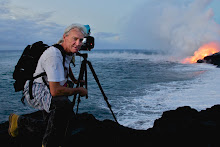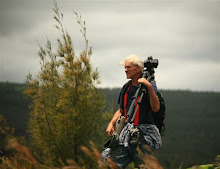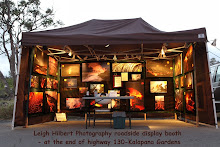
After such dynamic activity last week with the sudden collapse of magma pressure within the two active craters followed immediately by those spectacular Kamoamoa fissure eruptions, the Kilauea Volcano has gone into the most inactive period since 2007 and 1997 before that:
- Tiltmeters nearly flat lined
- An unnerving 32 rapid earthquakes in a tight area at Kalapana, many over 3.0 and the one I felt quit well a 4.6 in magnitude – followed by almost zero seismic tremor activity throughout the whole of Hawaii
- No surface lava within either Halema’uma’u or Pu`u O`o craters or the new Kamoamoa fissure zone – or anywhere else; only remnant glowing in the rubble at the bottom of both craters and remnant fuming from all recently active eruption sites.
Unnervingly quiet. … But signs of change may be starting.
Without launching into all the details and geology and links that discuss previous Kilauea eruption pauses, it is suffice to say that this volcano has erupted nearly steadily for 28 years, and any pauses in eruptive activity in that time have been followed shortly afterward, usually within days or weeks, by a dramatic magma shift and pressure rise into some portion of the volcanoes historically active rift zone, which covers many miles of the south side of the Island of Hawaii.
One such event was the 1960 Kapoho eruption. (My house sits literally along the edge of that 1960 flow; A`a lava rises 15 to 20-feet higher, and borders, 700-feet of my property line. – if it erupts here again I could get some great fissure eruption photos from my upper lanai and I’ll hook up a live webcam for you!! :)
That said, — in the last 24 hours the tiltmeters are showing some significant inflation,

but interestingly only under Halema’uma’u, and, both of the active craters are showing a slight increase in lava glow at night. Earthquake activity continues to remain low, and a change in local earth tremor is what we are watching carefully for because any major new eruptive site is preceded by swarms of earthquakes that can rapidly escalate into the hundreds per day, as it did in the summer of 2007.

(Above-June 2007 Episode 56)
~~~~~~~~~~~~~~~~~~~~~~~~~~~~~~~~~~~~~~~~~~
A short account of my experience March 11th, 2011 related to the surge waves that arrived here in Hawaii as a result of the Japan’s devastating earthquake and tsunami: In the early evening of March 11th I was closely watching our local earthquake graphs as two small temblors appeared right on the Kalapana lava flow area. I phoned friends at Kalapana to ask if the felt them, some had, others didn’t. Soon after, more small tremors were being recorded one after the other in the same location (more on that below).

I also checked the world earthquakes site and saw a 7.9 magnitude earthquake had just taken place off the north coast of Japan.
Then a neighbor phoned and said the Japan quake was upgraded to an 8.8 (later upgraded) – a very serious quake that could easily produce catastrophic tsunamis for Japan, and eventually Hawaii and elsewhere.
As so many did, I began watching the news from Japan on the internet and also getting many phone calls from my neighbors because we live within a tsunami evacuation zone. Hawaii County Civil Defense announced a tsunami watch followed by a tsunami warning; my entire community prepared to evacuate, but I did not. The majority of homes in my community are virtualy at sea level, but I have the highest property in the community at the 65-feet elevation and it lays nearly a mile inland from the open ocean.

So, just before 11:00 PM, while I was watching the unbelievable destruction news footage from Japan, the evacuation sirens began blaring loudly from the tower just down the road from me, and at the exact same time, my rustic post & pier three-story home suddenly began shaking from an earthquake! – A surreal moment for me; disorienting!
The shuddering did not last long but in light of the unfolding Japan quake and local volcanic events, it did get my attention! I already had our local earthquake chart webpage open and spotted the 4.6 that I had just felt—Kalapana had come alive with dozens of more temblors in rapid succession and concentrated in a small area—I was concerned a sloughing of the larger delta shelf may be in progress, which could lead to a major local quake & tsunami as it had back in 1975 that claimed lives here. In 1975, Kilauea's south flank was the site of the magnitude 7.2 Kalapana earthquake, the highest magnitude event in this century. The Kalapana coast subsided as much as 11 feet, generating a huge tsunami that claimed two lives in Hawaii Volcanoes National Park, destroyed houses in Punaluu, sank fishing boats in Keauhou Bay, and damaged boats and piers in Hilo.
Anyway, no Japan generated tsunami reached my community but there was
some damage to the Kona side, but not worth mentioning compared with what Japan continues facing. My heart goes out to all of those people there who have truly lost not only their local communities, but entire cities very tragically washed away, and their inhabitants; many families lost.
~~~~~~~~~~~~~~~~~~~~~~~~~~~~~~~~~~~
Kilauea WatchHere on the Big Island, we are now watching for a return of magma pressures beneath the two big craters and surrounding rift zones, and particularly a large and localized increase in seismic activity within the same zones. Sites to follow for this:
-- Magma pressures as shown on the USGS/HVO
deformation graphs So far, only the Halema’uma’u is showing inflation—there may be some new separation of magma delivery between the two craters; directly related to the recent fissure eruptions.
--
USGS/HVO daily updates-- Hawaii Island
earthquake charts and
lists (scroll down the list to see the recent Kalapana swarm and magnitudes.
-- Kilauea
Webcams, particularly the
Halema’uma’u and
Pu`u O`o after dark. (You will need to scroll around on that Pu`u O`o one to see the lava glow inside the crater)
Mahalo for all the kind and supportive comments and emails this past week,
Aloha,
Leigh
 Soon after my post two days ago when visible lava was rising once again deep down inside the Halema’uma’u crater pit vent, the massive Pu`u O`o Crater began doing the same. Above are a couple frames of those cam images I had saved from two nights ago. You can see this new lava lake, day and night, here on the Pu`u O`o rater cam (scroll down the many cam frames to see the crater floor).
Soon after my post two days ago when visible lava was rising once again deep down inside the Halema’uma’u crater pit vent, the massive Pu`u O`o Crater began doing the same. Above are a couple frames of those cam images I had saved from two nights ago. You can see this new lava lake, day and night, here on the Pu`u O`o rater cam (scroll down the many cam frames to see the crater floor). Deformation radial tilt graphs, as shown in this morning’s chart, reveal magma is once again pressurizing below both craters, indicating the return of magma through conduits feeding the east rift of Kilauea, though both craters are now in deflation.
Deformation radial tilt graphs, as shown in this morning’s chart, reveal magma is once again pressurizing below both craters, indicating the return of magma through conduits feeding the east rift of Kilauea, though both craters are now in deflation.














































